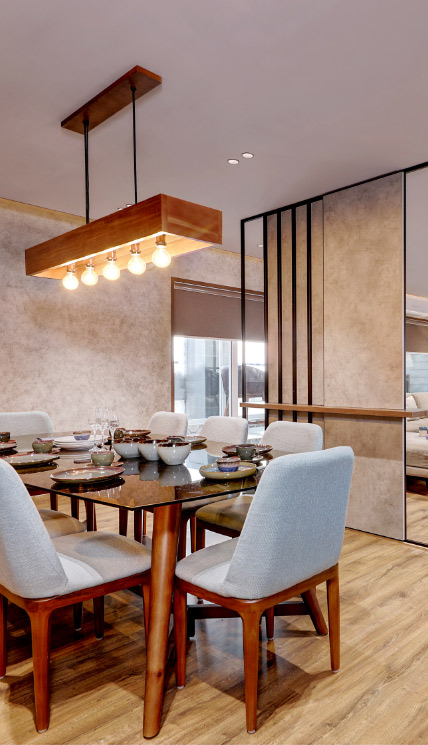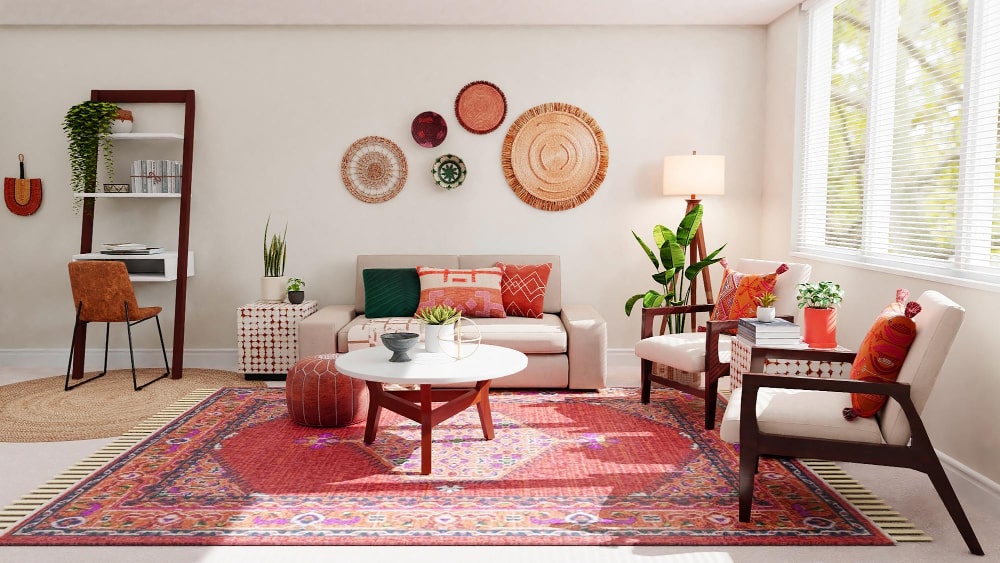Change Your Home With Vital Concepts of Interior Layout and Aesthetic Appeals
By comprehending the influence of shade concept and the significance of appearance and patterns, one can develop areas that are not only visually appealing but also deeply individual. Accomplishing this equilibrium involves even more than plain design; it incorporates a strategic arrangement and an eager understanding of exactly how each aspect engages within a room.
Recognizing Shade Concept
Color theory is a fundamental facet of interior decoration that substantially affects mood, assumption, and general visual. Understanding the principles of shade concept permits designers to create rooms that resonate mentally with residents while meeting practical needs (interior design firms). Shades can be categorized into three key types: main, secondary, and tertiary. Each group plays a vital role in developing consistency within a room.
The mental impact of colors is profound; warm colors such as reds and oranges stimulate energy and warmth, while trendy tones like blues and environment-friendlies promote calmness and harmony. Moreover, the use of corresponding shades enhances visual rate of interest, developing striking contrasts that can elevate a room's charm.
Neutral shades, on the other hand, function as a versatile background, permitting other style elements to radiate. It is vital to take into consideration elements such as illumination and the area's purpose when choosing a color scheme, as these can alter the assumption of colors throughout the day.
Eventually, a well-considered color pattern can change an area, cultivating a sense of comfort and style that aligns with the occupants' choices. Proficiency of color theory is, for that reason, an essential ability for any kind of indoor developer aiming to produce harmonious and inviting environments.
Achieving Balance in Style
Exactly how can developers attain a feeling of equilibrium in their spaces? Accomplishing balance in style is essential to producing harmonious interiors. Designers can use 3 key sorts of balance: symmetrical, asymmetrical, and radial. In proportion equilibrium includes arranging elements uniformly around a main point, cultivating a sense of order and tranquility. This kind usually includes pairs of furnishings or artwork, boosting visual stability.
Asymmetrical equilibrium, on the other hand, depends on varying elements that still achieve a natural look. This strategy enables more vibrant and casual arrangements, giving passion while preserving equilibrium. By thoroughly selecting varying dimensions, colors, and structures, designers can produce a visually engaging room that really feels well balanced yet energetic.
Radial balance emphasizes a central centerpiece with elements emitting external. This style is commonly seen in round layouts, where furniture and style create a cohesive border that draws the eye internal.
Eventually, accomplishing equilibrium calls for thoughtful consideration of scale, proportion, and the relationships in between components. luxury interior design. By skillfully using these equilibrium concepts, developers can transform spaces right into environments that really feel both visually pleasing and functionally harmonious, improving the total experience for residents
Importance of Spatial Awareness

A keen feeling of spatial recognition enables designers to recognize prime focus within a space, assisting the customer's interest to vital features while preserving an overall feeling of unity. It likewise aids in the strategic positioning of lights, which can drastically influence the perception of space and state of mind. Moreover, comprehending spatial partnerships makes it possible for the developer to provide to the details needs of inhabitants, making sure that each area offers its designated purpose without endangering visual appeals.
Eventually, spatial recognition is vital for maximizing the possibility of any type of interior space. By meticulously taking into consideration the interaction in between dimensions, format, and feature, designers can produce atmospheres that not just satisfy useful demands but likewise stimulate a sense of comfort and elegance, improving the total living experience.
Integrating Texture and Patterns
Welcoming a diverse array of structures and patterns can substantially improve the visual and tactile charm of an interior area. The tactical usage of different products-- such as wood, steel, fabric, and rock-- creates deepness and rate of interest, making a room really feel more inviting and vibrant. As an example, incorporating smooth surfaces with rough appearances can establish an equilibrium that draws the eye and involves the check my reference senses.
When including patterns, take into consideration both range and rep. Huge patterns can work as centerpieces, while smaller sized, refined layouts can complement other aspects without overwhelming the room. Layering patterns, such as pairing floral cushions with candy striped tosses, adds intricacy and a sense of consistency if performed thoughtfully.
It is also vital to preserve a cohesive color palette, making sure that appearances and patterns function with each other as opposed to contend for interest. By choosing a few key structures and patterns, you can produce a merged visual that shows your personal style while boosting the total atmosphere of the space. Inevitably, the mindful incorporation of these elements can change an ordinary space right into an innovative setting abundant with personality and warmth.
Customizing Your Room
Developing a space that shows your individuality is essential to accomplishing a really welcoming atmosphere. Customization in interior decoration permits you to instill your special design and rate of interests into your home, changing it from a mere shelter into a shelter that talks to that you are. Begin by picking a color palette that resonates with your emotions-- bold tones can energize, while soft tones supply harmony.
Include artwork and decoration that show your interests, whether it be traveling, nature, or abstract concepts. Presenting personal collections, such as publications, photographs, or keepsakes, can stimulate treasured memories and develop prime focus within a room. Furthermore, think about personalizing useful items, like upholstered furnishings, to straighten why not try here with your visual choices.

Verdict
In conclusion, the change of a home with the important concepts of interior design and visual appeal requires a comprehensive understanding of color concept, equilibrium, spatial understanding, structure, and personalization. Each component adds substantially to developing a harmonious and useful living environment - miami luxury interior design. By attentively incorporating these concepts, people can improve the visual appeal and emotional vibration of their spaces, eventually promoting a home that reflects unique identifications while offering comfort and usefulness